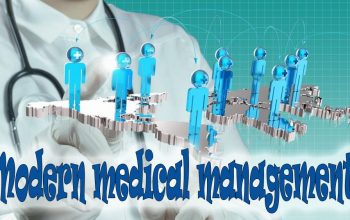
Dr. Peter Bertagnoll, PhD in Business Administration in health management Systems
Abstract
This article delves into the crucial function of strategic planning in the healthcare industry, emphasizing cutting-edge approaches like PEST (Political, Economic, Social, and Technological) analysis, SWOT (Strengths, Weaknesses, Opportunities, and Threats) analysis, and complete medical management. It seeks to clarify the ways in which these frameworks support strong decision-making, improve organizational resilience, and advance the provision of excellent patient care inside healthcare systems. It also looks at how the World Health Organization (WHO) has shaped international health policies and guidelines.
Introduction
The health care industry’s dynamic and varied character demands thorough strategic planning to assure its long-term viability and performance. This article dives into strategic planning approaches, with a particular emphasis on SWOT and PEST assessments, and investigates their application in medical management practices. These tools enable health-care managers to understand the industry’s intricacies, foresee emerging trends, and implement evidence-based practices. Furthermore, the article examines the substantial influence that the World Health Organization (WHO) has on global health policy and strategic planning.
Strategic Planning in Health Care
Strategic planning is an essential process that involves the systematic identification of long-term objectives and the formulation of strategies to achieve these goals. It encompasses a thorough assessment of both internal and external environments to align organizational resources with strategic priorities, thereby optimizing patient outcomes and ensuring financial sustainability.
SWOT Analysis
SWOT analysis is a strategic planning tool that facilitates the identification and evaluation of an organization’s internal and external factors:
- Strengths: These are inherent attributes that provide a competitive advantage. In health care, strengths may include state-of-the-art medical technology, highly qualified personnel, and robust financial health. The ability to deliver high-quality patient care consistently is also a significant strength. For example, a health care organization may leverage its advanced diagnostic equipment and specialized medical staff to enhance patient care quality and operational efficiency.
- Weaknesses: Internal limitations that impede performance. Common weaknesses in health care settings might involve outdated infrastructure, insufficient staffing levels, and inefficiencies in operational processes. Identifying these weaknesses is crucial for targeted improvements. Addressing issues such as prolonged patient wait times and suboptimal resource utilization can lead to significant enhancements in service delivery.
- Opportunities: External conditions that the organization can capitalize on for growth and development. Opportunities in health care may arise from technological advancements, favorable policy changes, or the expansion of health services into underserved markets. The emergence of telemedicine, for instance, provides opportunities to reach remote patient populations and deliver care more efficiently.
- Threats: External factors that pose risks to the organization’s success. These can include regulatory changes, economic volatility, emerging health threats, and increased competition from new market entrants. For example, a health care organization may need to adapt to new health care regulations that impact funding and operational practices.
PEST Analysis
PEST analysis examines the macro-environmental factors affecting an organization, providing a comprehensive understanding of the broader context in which health care entities operate:
- Political Factors: These include government policies, regulatory frameworks, and political stability, which can significantly impact health care operations. For instance, health care reform initiatives and changes in public health policies can create both opportunities and challenges. Health care organizations must stay abreast of legislative changes that affect funding, patient care standards, and operational protocols
- Economic Factors: Economic conditions such as inflation rates, employment levels, and economic growth influence health care funding and operational viability. Economic downturns may lead to reduced funding and increased financial constraints, necessitating strategic adjustments. Health care organizations must strategically manage their budgets to ensure financial sustainability during economic fluctuations.
- Social Factors: Demographic shifts, population health trends, and evolving societal attitudes toward health care are critical considerations. For example, aging populations and increasing prevalence of chronic diseases demand strategic planning to address these challenges effectively. Health care organizations may need to expand their services to cater to the growing needs of elderly patients and chronic disease management.
- Technological Factors: Technological innovations drive transformation in health care. The integration of electronic health records, advancements in telemedicine, and the development of cutting-edge diagnostic tools are pivotal in enhancing care delivery and operational efficiency. Health care organizations must invest in technology to improve patient care and streamline administrative processes.
Medical Managemen
Medical management encompasses the administration and coordination of health care services to achieve optimal patient outcomes and organizational efficiency. Key components include:
- Quality Improvement: This involves systematic efforts to enhance patient care quality through data-driven approaches, process optimization, and adherence to clinical best practices. Continuous quality improvement (CQI) initiatives are integral to achieving and maintaining high standards of care. For example, implementing evidence-based protocols and regular performance evaluations can lead to significant improvements in patient care quality.
- Resource Allocation: Effective management of financial, human, and physical resources is essential for meeting strategic objectives. This includes budget planning, workforce management, and the strategic deployment of medical technologies. Health care organizations must ensure optimal resource utilization to maximize operational efficiency and patient care quality.
- Patient-Centered Care: Emphasizing patient needs and preferences is central to improving patient satisfaction and health outcomes. Patient-centered care models prioritize personalized care plans, patient engagement, and shared decision-making. Health care organizations can enhance patient satisfaction by involving patients in their care decisions and providing tailored care plans.
- Regulatory Compliance: Ensuring adherence to health care regulations and accreditation standards is critical for legal compliance and maintaining operational legitimacy. This includes compliance with health care laws, safety regulations, and quality standards. Health care organizations must establish robust compliance programs to mitigate legal risks and ensure high standards of patient care.
Role of the World Health Organization (WHO)
The World Health Organization (WHO) plays a pivotal role in shaping global health policies and strategic planning. As the leading international public health agency, WHO sets standards, provides guidance, and facilitates collaboration among member states to address global health challenges. Key functions of WHO include:
- Policy Development: WHO develops global health policies and guidelines to address emerging health threats and promote public health. These policies are based on rigorous scientific research and evidence-based practices.
- Capacity Building: WHO provides technical assistance and capacity-building support to countries to strengthen their health systems and improve health outcomes. This includes training health care workers, improving health infrastructure, and enhancing disease surveillance systems.
- Disease Prevention and Control: WHO leads global efforts to prevent and control infectious diseases through vaccination campaigns, outbreak response, and public health initiatives. WHO’s efforts in controlling diseases such as polio, malaria, and HIV/AIDS have significantly improved global health.
- Research and Innovation: WHO promotes research and innovation in health care to develop new treatments, technologies, and strategies for improving health outcomes. WHO collaborates with research institutions, governments, and the private sector to advance health care innovations.
- Health Promotion: WHO advocates for health promotion and disease prevention through public awareness campaigns, health education programs, and policy interventions. WHO’s initiatives aim to reduce the burden of non-communicable diseases, promote healthy lifestyles, and improve health equity.
Conclusion
In conclusion, strategic planning in health care, including SWOT and PEST evaluations and strong medical management practices, is critical for navigating the intricacies of the health care ecosystem. These techniques help health care professionals make informed, evidence-based decisions, anticipate industry trends, and provide high-quality patient care. The World Health Organization (WHO) is an important player in establishing global health policies and promoting health equity. Health care providers can improve their resilience, operational efficiency, and overall influence on public health by incorporating these analytical frameworks and partnering with international health organizations.


